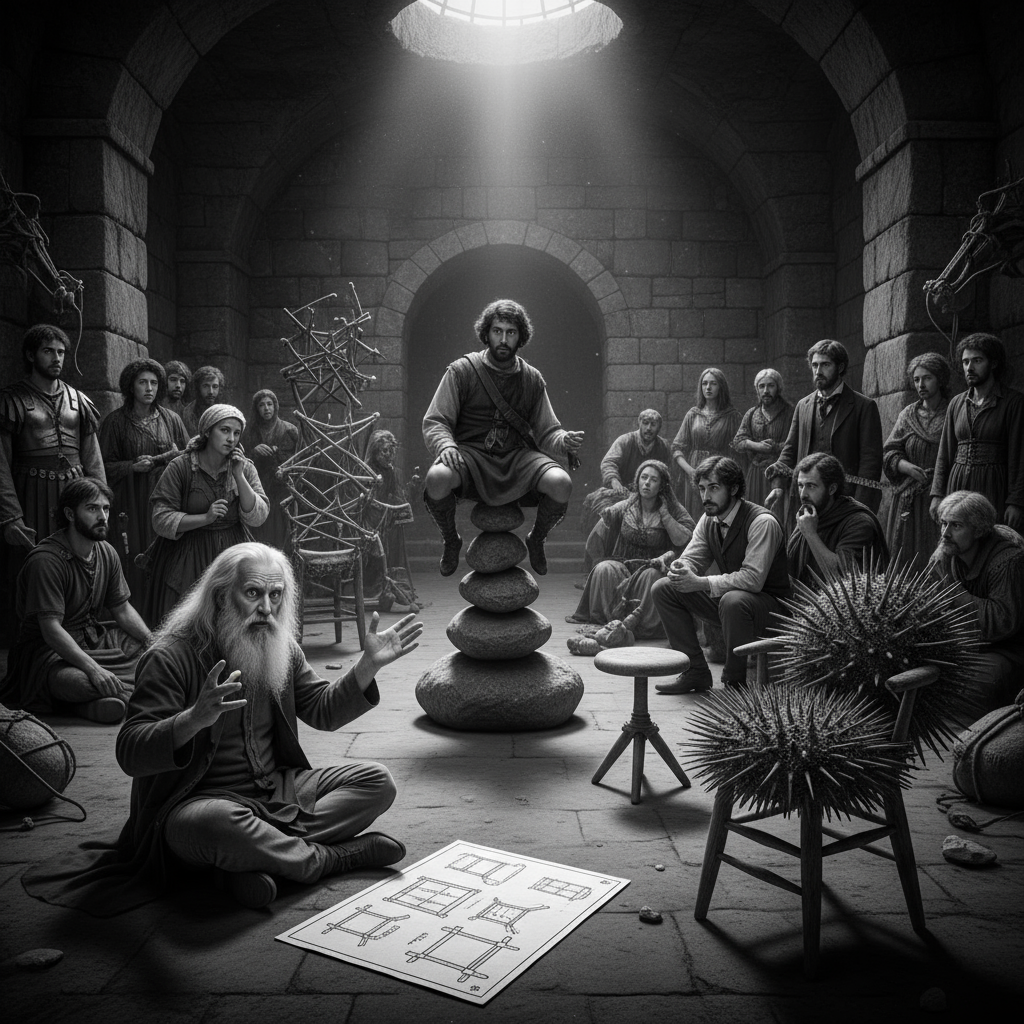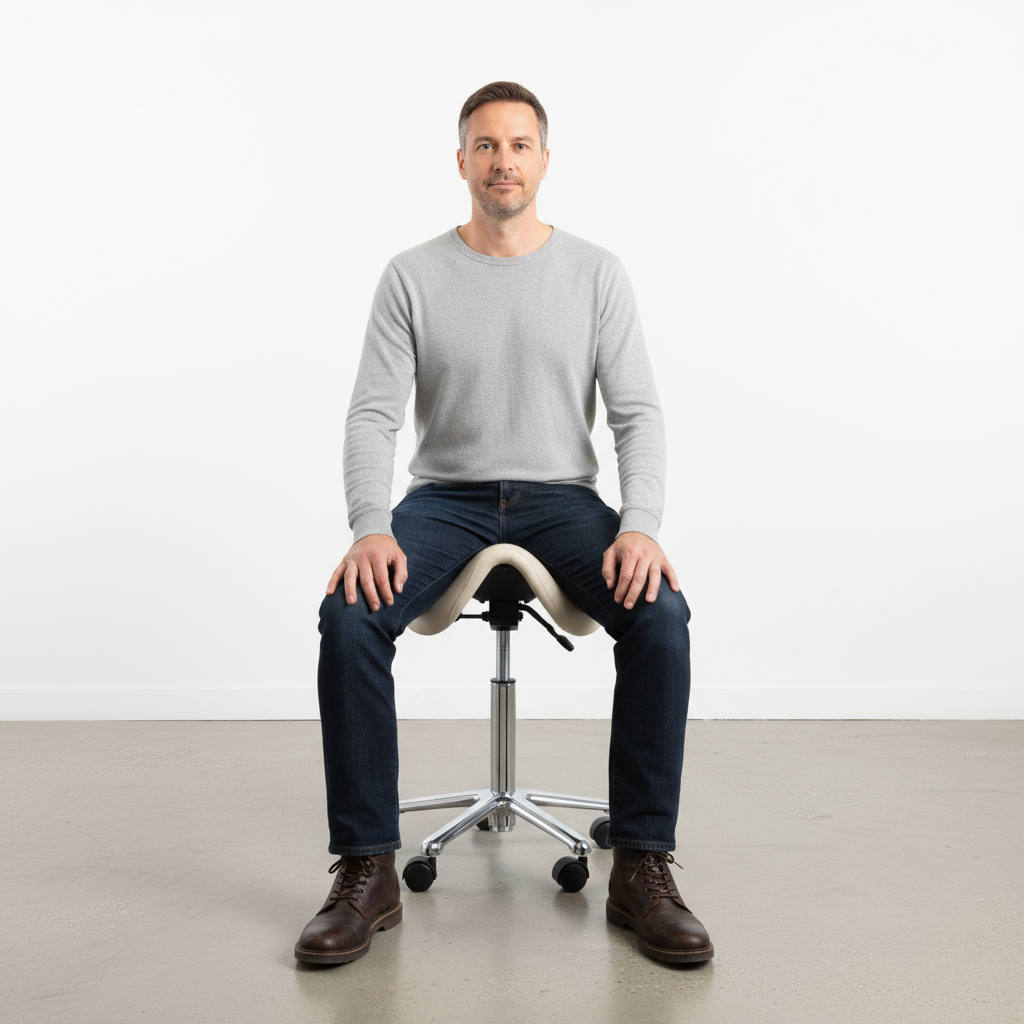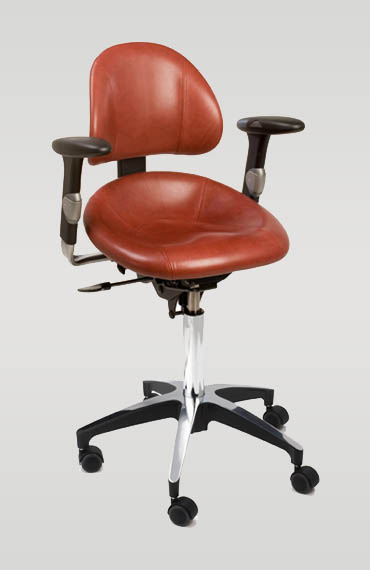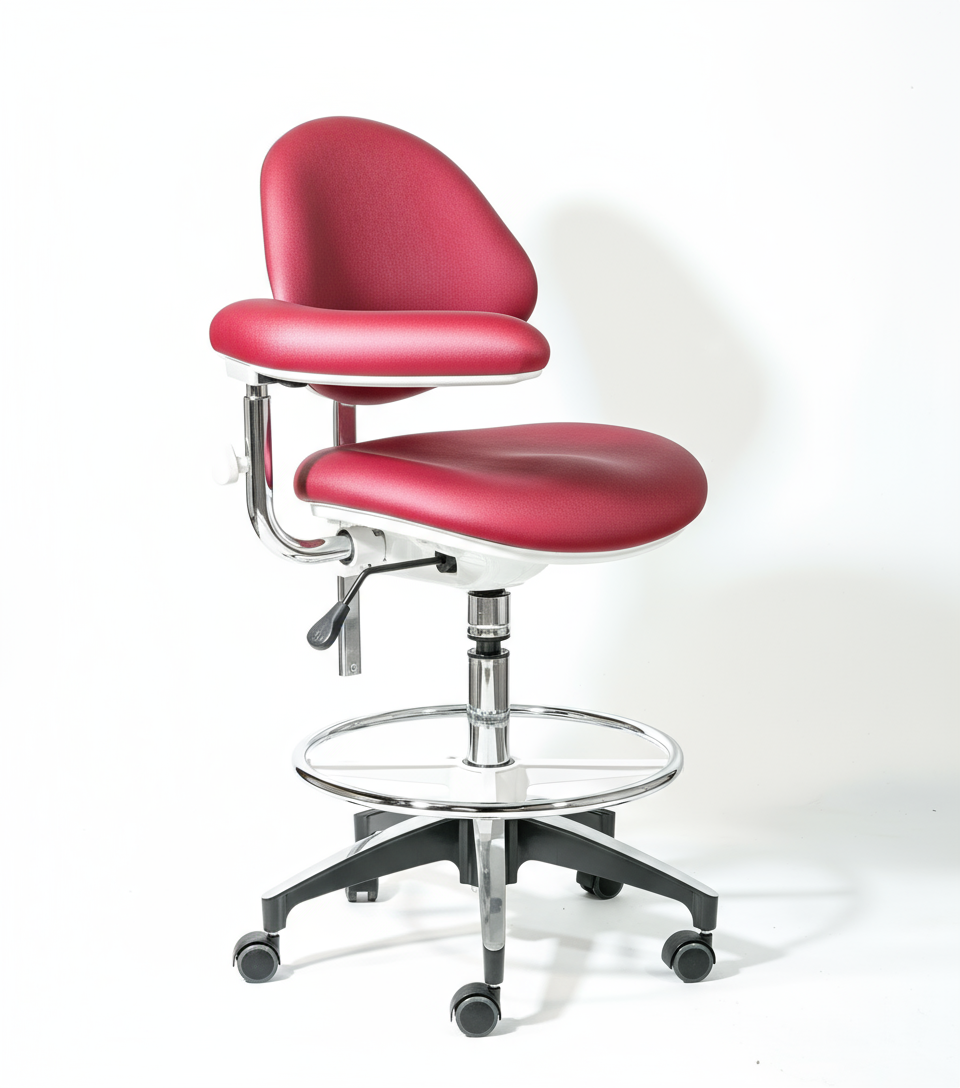Share
Who Invented Sitting (And Why They'd Be Horrified by Your Office Chair)
A journey through the surprisingly dramatic history of human seating
Here's a question that probably never crossed your mind while you were slumped in your office chair this morning: Who invented sitting? The answer might surprise you. Nobody did. Humans have been sitting since we first figured out how to bend our knees. But the way we sit? That's a story of evolution, innovation, and—unfortunately—a spectacular descent into ergonomic madness that would make our ancestors weep.
If you could transport the brilliant minds who created the first chairs through history to witness your average Monday morning office scene, they wouldn't just be confused—they'd be horrified. Picture it: rows of people hunched over glowing rectangles, backs curved like question marks, trapped in puffy fabric prisons for eight hours straight. It would look less like productive work and more like some kind of dystopian torture experiment.
So how did we get here? How did the simple, natural act of sitting evolve into the chronic pain epidemic that plagues modern workers? The answer is a fascinating journey through human ingenuity, cultural shifts, and—spoiler alert—some seriously misguided ideas about what comfort actually means.
In the Beginning: The Original "Seats"
Let's start at the very beginning. Early humans didn't "invent" sitting any more than they invented breathing. What they did was discover that sometimes you need to rest, and the ground isn't always the most comfortable option.

The Squatters and Perchers (50,000+ Years Ago)
Our earliest ancestors were natural movement enthusiasts. They squatted by fires, perched on rocks, and sat cross-legged on the ground. Notice something important here: they were always active, even when "sitting." Their core muscles stayed engaged, their hips remained mobile, and they changed positions frequently because, frankly, sitting on a rock gets uncomfortable pretty quickly.
This wasn't sitting as we know it today—it was active resting. Their bodies stayed alert, muscles engaged, ready to spring into action at a moment's notice. If a saber-toothed tiger showed up, they could leap up and run. Try doing that from your cushy office chair.
The First "Furniture": Ancient Innovation
The first recognizable chairs appeared around 3100 BCE in Egypt, and they were nothing like what you're probably sitting in right now.
Egyptian Thrones: Sitting as Status Symbol
The ancient Egyptians created the first formal chairs, but here's the thing—they were designed for pharaohs and gods. These weren't everyday furniture; they were thrones meant to elevate the divine ruler above mere mortals. Most importantly, they were used sparingly. Even pharaohs didn't spend eight hours a day planted in their chairs browsing hieroglyphic emails.
Greek Philosophy Meets Furniture
The Greeks gave us democracy, philosophy, and the klismos chair—a surprisingly elegant design with a curved back that actually supported natural spinal curves. But here's what's fascinating: Greek philosophers did their best thinking while walking. Aristotle's Peripatetic School literally means "walking around." They understood that movement and mental clarity were connected.
Medieval Times: The Rise of "Working While Sitting"
Fast forward to medieval times, and we see the first signs of our modern predicament. Monks began spending longer periods seated while copying manuscripts, and craftsmen started using stools for detailed work.
But here's what they got right that we got wrong: they used simple, firm stools that forced good posture. Medieval stools were basically the original saddle chairs—no back support, firm surfaces, and heights that encouraged active sitting. The monks who spent hours hunched over manuscripts complained of back pain, but they instinctively knew that soft, supportive seating would make things worse, not better.
The Medieval Solution: Active Sitting
Medieval craftsmen who spent hours at detailed work—scribes, jewelers, tailors—overwhelmingly chose simple stools over elaborate chairs. Why? Because they discovered through trial and error that firm, backless seating kept them more alert, reduced fatigue, and allowed for the precise movements their work required. Sound familiar?
The Industrial Revolution: Where Everything Went Wrong
If there's a villain in our sitting story, it's the Industrial Revolution. This is when we took a dramatic turn from active, occasional sitting to passive, prolonged sitting.
The Birth of the Modern Office (1880s)
The first modern office buildings appeared in the 1880s, and with them came a revolutionary idea: people should sit at desks for 8-10 hours a day. This was completely unprecedented in human history. No civilization had ever asked its people to remain seated for such extended periods. The ancient Egyptian slaves who built the pyramids moved more during their workday than the average modern office worker.
The furniture industry responded by creating increasingly "comfortable" chairs designed to make prolonged sitting bearable. Cushions got thicker, backs got higher, and support systems got more elaborate. But here's the tragic irony: the more comfortable we made sitting, the more unhealthy it became.
The 20th Century: Peak Sitting Madness
The 20th century saw sitting reach truly absurd levels. We went from occasional perching to marathon sitting sessions, and the furniture industry kept pace with increasingly elaborate solutions to problems that shouldn't exist.
- 1950s: The executive chair becomes a status symbol—bigger, more cushioned, more "supportive"
- 1970s: Ergonomic chairs promise to fix sitting problems with more adjustments and features
- 1990s: Computer work makes sitting even more static and prolonged
- 2000s: Gaming chairs and executive recliners reach peak absurdity
- Today: We have chairs with lumbar pumps, memory foam, massage functions, and enough adjustments to confuse a rocket scientist
What Would the Ancients Think?
Imagine bringing an ancient Egyptian craftsman, a Greek philosopher, or a medieval scribe to your office today. After they got over their amazement at the technology, here's what they'd probably say:
Ancient Egyptian: "You sit in that soft throne ALL DAY? But you're not a pharaoh! And why aren't you moving? Are you paralyzed?"
Greek Philosopher: "No wonder your thinking is so sluggish! How can the mind be sharp when the body is idle? We walked while we pondered for a reason!"
Medieval Monk: "Your back hurts because your chair is too comfortable! We used hard stools because we knew soft seating makes the body weak and the mind foggy."
They'd be mystified by our approach to solving sitting-related pain: more cushioning, more support, more features. To them, it would be like trying to cure overeating by making food taste better.
The Plot Twist: We Already Knew the Answer
Here's the most frustrating part of this entire story: humans figured out healthy sitting thousands of years ago. The evidence was hiding in plain sight:
Horseback Riding: The Original Ergonomic Seating
For over 4,000 years, humans have been sitting on saddles for extended periods while maintaining excellent posture, core strength, and alertness. Riders routinely spend hours in the saddle without back pain, hip problems, or the chronic issues plaguing office workers. The saddle design wasn't an accident—it evolved to be the optimal seating for long-term comfort and performance.
Think about it: a skilled horseback rider can spend 8+ hours in the saddle, maintaining perfect posture, staying completely alert, and engaging in precise, controlled movements. Meanwhile, most office workers can't make it through a 2-hour meeting without fidgeting, slouching, or getting stiff.
The Modern Renaissance: Returning to Ancient Wisdom
The good news? We're starting to remember what our ancestors knew. Progressive workplaces and health-conscious individuals are rediscovering the principles that made ancient seating healthy:
- Active sitting that engages core muscles
- Firm surfaces that encourage good posture
- Positions that promote movement and position changes
- Designs that work with natural body mechanics rather than against them
Saddle chairs represent the perfect fusion of ancient wisdom and modern engineering. They take the time-tested principles of saddle design—the open hip angle, the active core engagement, the balanced positioning—and apply them to contemporary work environments.
The Future of Sitting: Learning from the Past
We stand at a fascinating crossroads in the history of sitting. We can continue down the path of increasingly elaborate "comfort" solutions that make us weaker and less healthy, or we can return to the principles that kept our ancestors strong, alert, and pain-free.
The ancient inventors of the first chairs would be amazed by our technology, but they'd recognize good seating design immediately. They'd gravitate toward saddle chairs—not because they're trendy or high-tech, but because they honor the principles of healthy, active sitting that humans have known for millennia.
The next time you settle into your office chair, take a moment to consider the incredible journey that brought us here. From Egyptian thrones to medieval stools to modern saddle chairs, the best seating solutions have always shared the same characteristics: they support natural posture, encourage movement, and work with our bodies rather than against them.
The history of sitting teaches us one crucial lesson: the most comfortable chair isn't the one that coddles you—it's the one that challenges you to sit the way your body was designed to sit. Our ancestors would be horrified by our office chairs, but they'd absolutely approve of the movement back toward active, healthy seating.
Who invented sitting? Nobody and everyone. But who perfected it? That might just be the person wise enough to learn from thousands of years of human seating evolution—and brave enough to choose health over short-term comfort.




